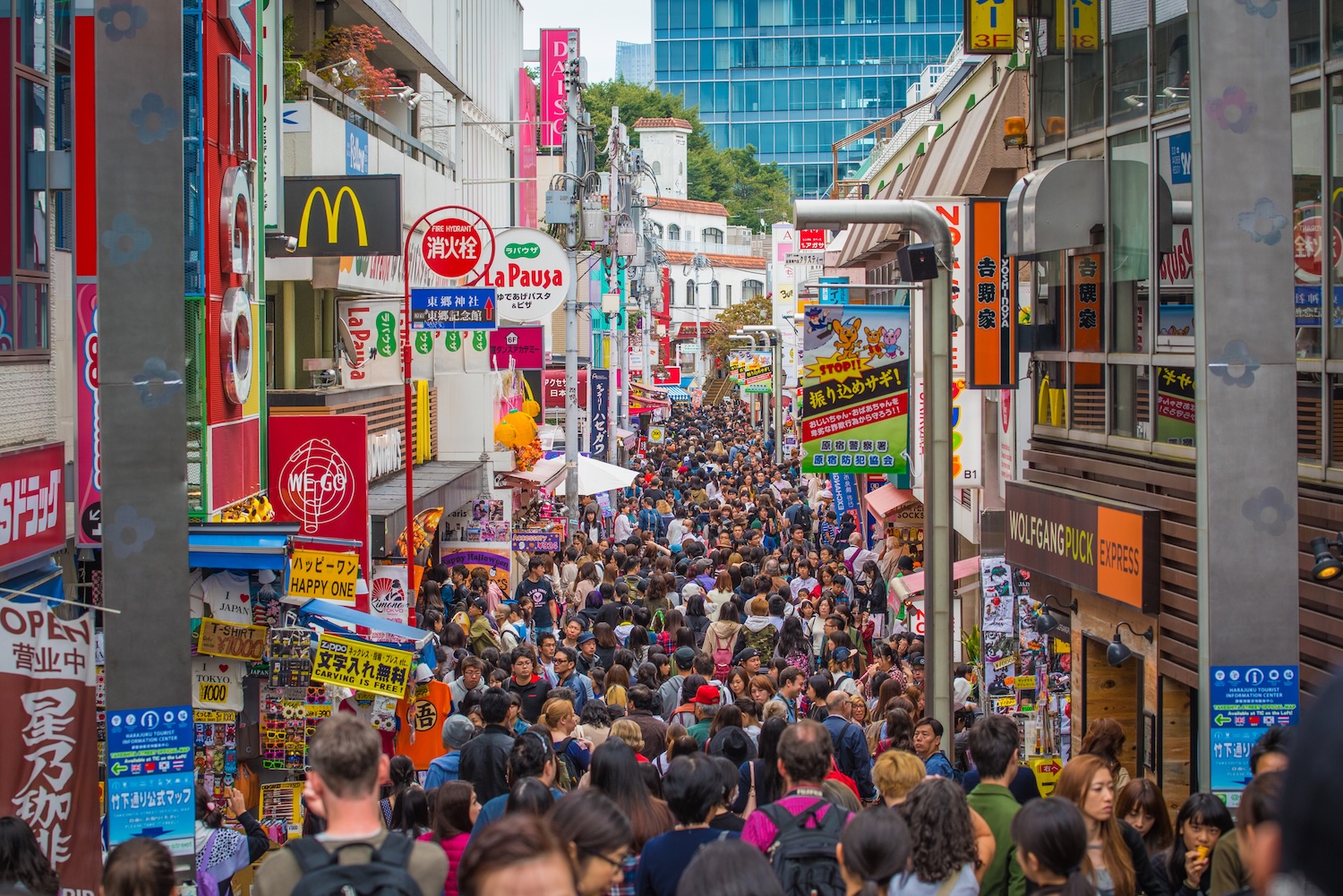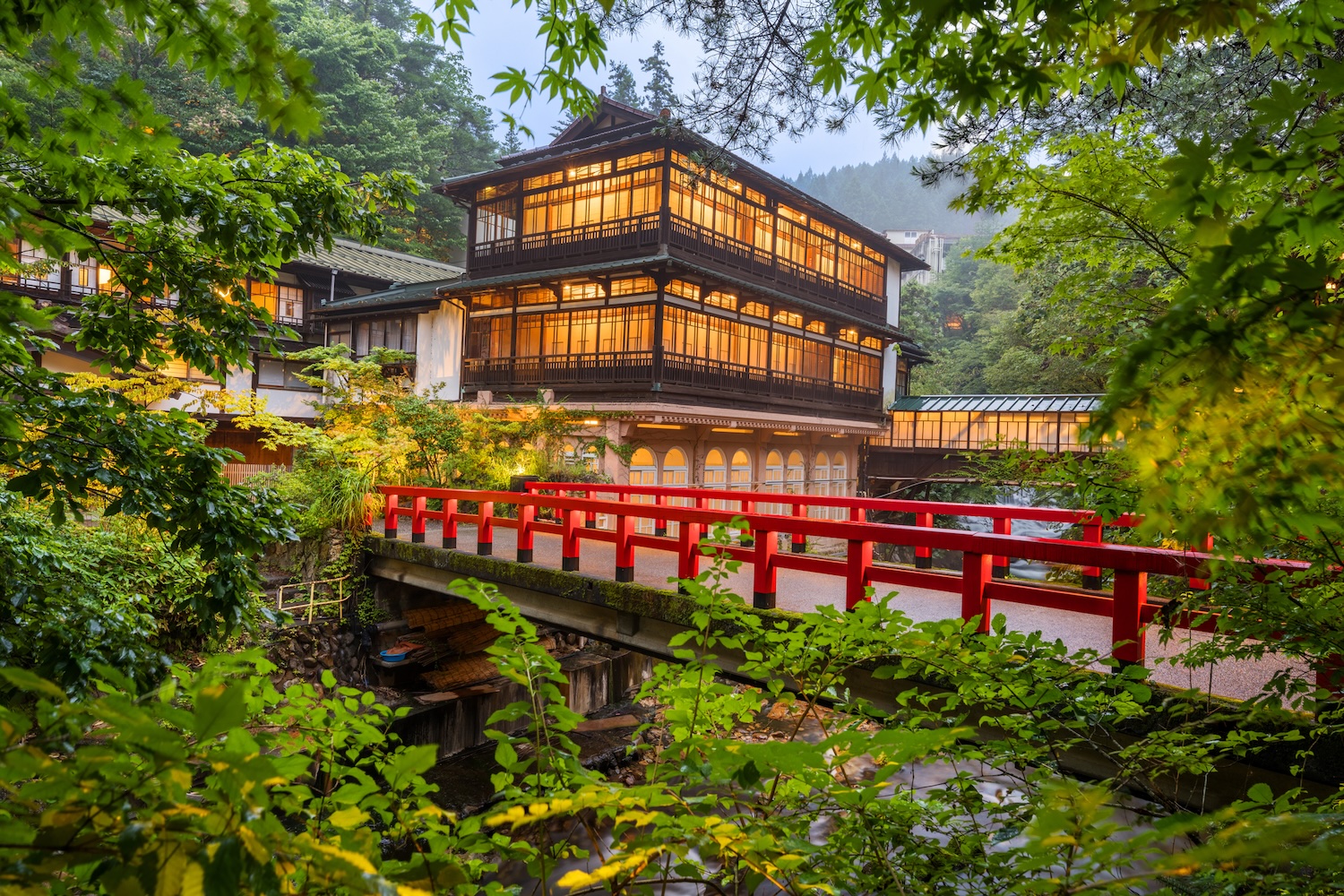We get it. You’ve got a week, a bucket list and a JR Pass screaming Golden Triangle. Tokyo dazzles. Osaka feeds you. Kyoto looks great on Instagram. But by now, your itinerary might as well come with a queue number and a map of the top 10 places to bump into other tourists. If you’re wondering where to go in Japan that isn’t Tokyo, Kyoto or Osaka —congrats, you’re asking the right question.
Even Japan’s tourism officials are begging you to spread out. The crowds are unsustainable. Locals are losing it. Prices are through the roof. Meanwhile, the rest of Japan — literally 90% of it — is just sitting there, offering jaw-dropping scenery, wild festivals, empty castles, private hot springs and ridiculously affordable ryokan (traditional inns) — all without the wait or the crowds.
Do yourself a favor (and Japan a solid): ditch the triangle. Go rogue. Head north, west or inland. Want authenticity? Try a rural izakaya where you’re the only foreigner. Soak in an onsen without a selfie stick in sight. Meet someone who’s genuinely surprised you made it that far. I once walked into a karaoke bar in Kinugawa Onsen and walked out with free drinks and a friend group I don’t remember adding.
Everyone’s Going to The Same Three Cities

Harajuku is a tourist trap, but at least it keeps Urara free.
Japan welcomed nearly 25 million foreign visitors in 2023 and 37 million in 2024. By 2030, the country expects to reach 60 million. Kyoto, with a population of just 1.6 million, had over 10 million visitors. It’s so bad that Japanese people are staying away. Osaka is considering taxing tourists to combat the overcrowding.
Meanwhile, Tokyo’s hotel rates are up by 20–30%. In Kyoto, average room prices now exceed ¥30,000 per night during peak seasons. Want a cozy little ryokan? Hope you booked six months ago—or brought half your travel budget.
Even locals are getting priced out. Families are scaling back vacations, school trips are being shortened and many residents are simply opting to stay closer to home. In response, some regions are exploring dual pricing systems to give locals a break, while others are offering travel subsidies or increased allowances.
Locals Are Over It
Kyoto’s geisha districts are starting to wonder if the tourism money is worth the chaos. In Gion, the city has attempted to ban tourists from entering private alleys after repeated complaints of visitors harassing maiko (apprentice entertainers) and geiko (fully trained geisha) for photos and disrupting the neighborhood’s daily life. Signs now warn tourists not to follow or film geisha. You’d think it’s common sense, but you still have tourist chasing them down and blocking them for photos without their consent.
Meanwhile, trash is piling up in Arashiyama and other tourist hotspots as the city’s waste systems struggle to keep up. Locals can’t even board their own buses — they’re packed full of day-trippers with backpacks and roller bags, all cramming into the same narrow streets for the same photo ops. The city has tried everything from luggage drop-off points to crowd-control staff, but it’s still a zoo.
It’s Killing Towns

And you’re missing out. (Shima Onsen, Gunma)
When 70–80% of international tourists crowd into the same three cities, entire regions are overlooked. Many of these regions already have aging populations and shuttered businesses. While the Big Three drown in foot traffic and hotel taxes, the rest of Japan is left begging for scraps, trying to lure tourists with influencers and wasted tourism projects that miss the mark.
Those usually involve another early morning fish market and yet another tiny shrine in the hills. The poor aunties and uncles still living in these small towns can’t really figure out what tourists actually want. But no one’s flying to Fukui or Shimane for another 6 a.m. fish market and another mossy temple in the hills when they can just hit Toyosu or Asakusa in Tokyo.
(That said, Fukui is awesome. And probably has the best fish market I’ve ever been to.)
These towns want tourists. They’ve got the ryokan, the festivals, the hot springs and plenty of room to breathe. But without visitors, the money dries up. Local trains lose funding. Cultural sites fall into disrepair. That mom-and-pop soba shop you would’ve loved? Closed for good.
When places do try to compete, they often feel pressured to “Kyoto-fy” themselves with faux cobblestone streets and temple-themed gift shops. But imitation doesn’t bring sustainability. It brings disappointment, overcrowding and communities bending over backwards to fit into a tourism model that was never built for them in the first place.
Kanazawa, Takehara, Tsuwano; how many “Little Kyotos” does Japan even have at this point?
It’s your trip, maybe even your only trip of the year. But if travelers just spread out a little — literally hop on any other Shinkansen line—they’d find incredible towns eager to share their stories. Your money would go further. Your experience would go deeper. And your trip wouldn’t be part of the bigger problem.
The Myth of Kyoto
Click here to read more.
External Link
https://gaijinpot.com/
© GaijinPot


AloJapan.com